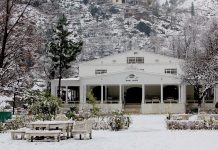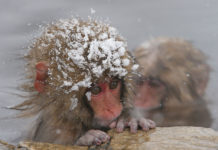There is no longer a minefield more extensive in the world than the Moroccan Wall. In any modern atlas or Google Map, you will find a region clearly identified as “Western Sahara” at the southern end of Morocco.
There are no political boundaries between “Western Sahara” and Morocco, indicating it is not a country, but it is not completely under its control either. There is a highly militarized zone in the middle of the Moroccan Western Sahara Wall, a 2,700 km-long sand wall, in the center of the disputed region with a complex, war-torn history.

It rarely appears in the news and is rarely discussed outside of Africa, compared to other notorious barriers. It has gone unrecognized for decades, as well as the plight of the Sahrawi people who have been divided by the Moroccan Wall for forty years.
In 1975, Spanish forces began to occupy Western Sahara. Morocco and Mauritania took over the territory after Spain relinquished control and divided it between themselves, disregarding Saharawi independence demands dating back to the 1960s. Saharawi forces occupied Western Sahara until 1976 when the Polisario Front was formed. Several wars broke out following the declaration of the Saharawi Arab Democratic Republic (SADR) as an independent nation. Morocco occupied the region until 1979 when Mauritania withdrew.

The two regions of Moroccan territory were divided longitudinally by a 2,700-km-long sand berm around this time. Currently, Morocco controls the western and eastern sides of this region, while the Sahrawi rebels of the Polisario organization control the eastern side. The desert area between Algeria and Mauritania has an estimated population of 30,000 to 40,000 people, mostly refugees or nomads living in refugee camps.
A ceasefire between Morocco and the Polisario Front was signed in 1991, but thousands of Moroccan troops continue to patrol the Wall 24/7, scanning the region for possible intruders with radar masts and other electronic surveillance equipment.
A belt of mine runs along the wall, making it one of the world’s longest continuous minefields. Besides a large number of landmines and explosive remnants of war, there are also a large number of cluster munitions in the Sahrawi Territory. There is a high incidence of civilians being seriously injured, losing limbs, and dying when landmines are accidentally detonated.

Moroccan sovereignty over Western Sahara is not recognized by the United Nations. Self-determination is a right they assert for the Sahrawis. Many countries, such as France and the United States, have expressed their support for Moroccan occupations.
Western Sahara is economically important to Morocco. Phosphate reserves are plentiful in the region, and fish are abundant in the waters. Offshore oil and gas fields have also been rumored.
The region might actually be a burden for Morocco economically, according to Wikileaks’ leaked diplomatic cables. In spite of the possibility of discovering and exploiting offshore oil fields, the cable concluded that the territory would never benefit Morocco economically.







